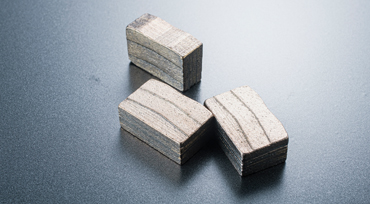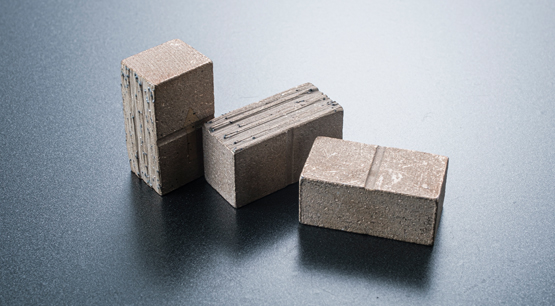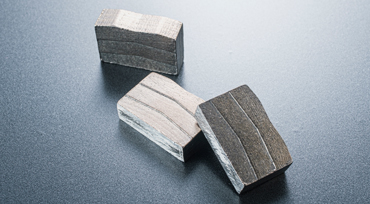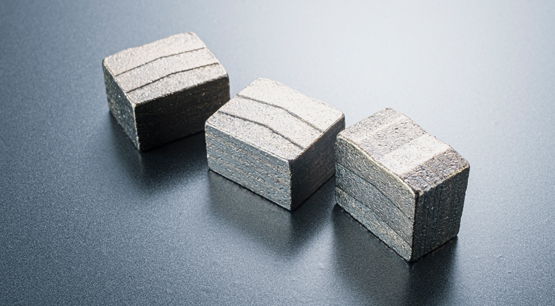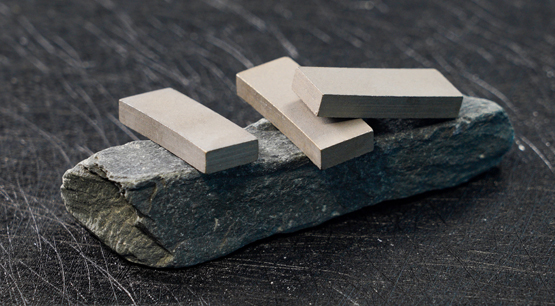Diamond is the one of the most hardness material in the world, in order to better exert it’s cutting ability, people fix the diamond in the metal bond through sintering, and through the combination of alloy and diamond,provide the physical and chemical holding power of the diamond fixation, so that the diamond can exert it’s cutting performance.Therefore, the sintering process only serves to fix the diamond, and does not improve the strength of the diamond itself, nor does it increase the performance of the diamond too much.
Compared with sintered diamond segment products, the polycrystalline diamond segment uses high pressure to turn synthetic diamond or natural diamond into polycrystalline diamond material. The main products are divided into PCD and PDC. Compared with sintered diamond segment, this type of diamond has the characteristics of higher abrasiveness, higher hardness, more stable material, and high temperature resistance. It is the rising cost of material cutting that is the biggest problem.
In terms of use, sintered diamond segment are mainly used for diamond saw blades and abrasives, which can cut and polish hard materials such as stone and concrete ect. The polycrystalline diamond segment is widely used in machining, cutting of aerospace materials, mine prospecting and stone mining.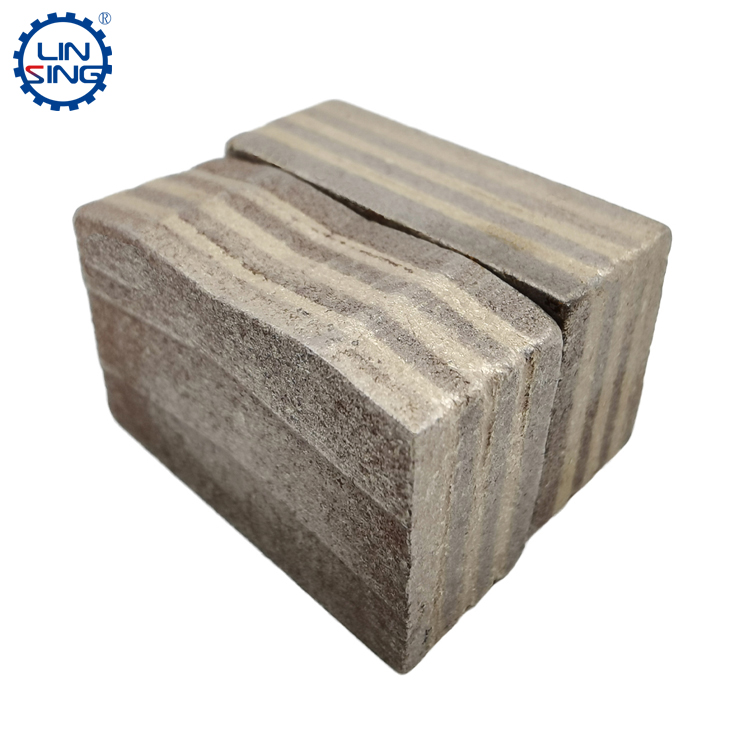
Below we introduce in detail the sintering process of sintered diamond, which is mainly divided into the following parts:
1.Pressurization and heating stage:
When performing hot press sintering, the powder material to be sintered is first compressed to a certain size, that is, when performing hot press sintering, a certain pressure is first applied to the powder material, and then the temperature is raised.
In this stage, a certain pressure is applied to the powder in advance to make the powder have a certain shape. When the temperature rises, the powder begins to expand due to heat, and the pores increase. In the actual hot pressing production process, we often cross pressurization and heating, and this is the case with the above hot pressing process.
In fact, the powder used in the production of diamond products is often added with a protective agent to prevent oxidation of the metal powder to prevent oxidation. The volatilization temperature of the protective agent is relatively low, and the protective agent has turned into a gas to overflow the powder before the agglomeration begins to sinter, and the protective agent gas also forms a protective atmosphere in the mould.
2.Pressure stage:
Applying pressure is to reduce the gap between the powders and increase the density of the nodules.
3.Pressurization and heating stage:
Due to the continuous pressure and temperature increase, the distance between the powder particles is further reduced or even disappeared. At this time, the atoms constituting the particles begin to diffuse each other, and the phenomenon of lattice aggregation (initial sintering begins) occurs. In actual production, this stage and the second stage are inseparable from pressurizing and heating operations. The purpose is to reduce the distance between the particles, and the edges of the particles begin to partially melt to prepare for the next step of hot pressing and sintering.
4.Maintain temperature and pressure stage:
Because the pressure and temperature reached a certain limit, the surface of the powder particles began to melt, and the atomic distance almost disappeared. At this time, the migration and diffusion of atoms begins, the grain lattice is distorted, and the metal particles infiltrate each other. At this stage, the density of the sintered body increases sharply, reaching about 96% to 98% of the theoretical density. Due to the diffusion of atoms, molecules, and crystal lattices, the atoms and molecules are aggregated. The result of aggregation is that the overall density increases, the bending strength increases, and the hardness increases.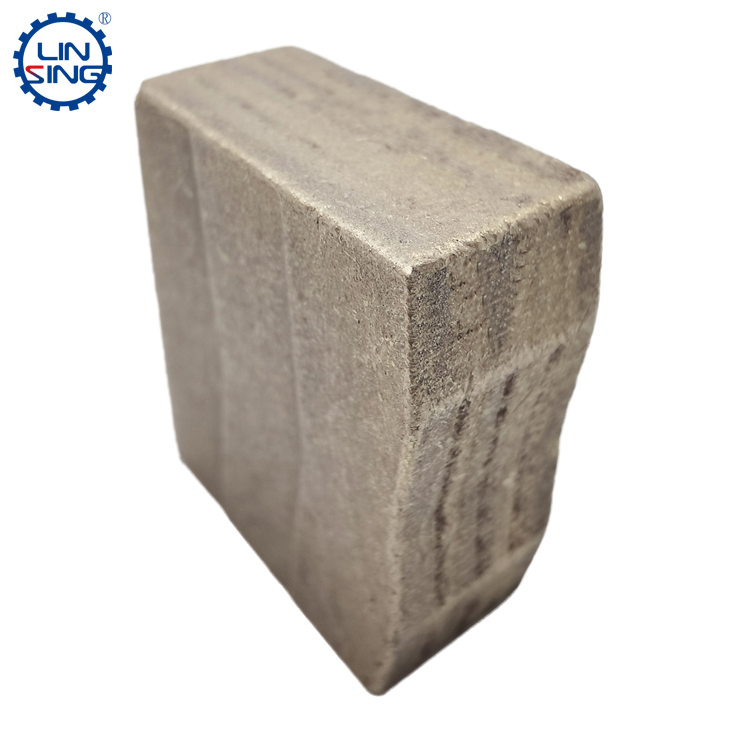
5.Cooling and pressure maintaining stage:
At this stage, the segment has been sintered and formed. Keeping a certain pressure and lowering the temperature can prevent the segment from springing back after the hot pressing is stopped, resulting in an increase in the size of the segment. Diffusion is the key to affecting product quality. The power of diffusion comes from the migration of atoms, molecules, and crystal lattices. The factors affecting diffusion are: particle size (raw material), temperature, pressure, and sintering time of hot pressing and sintering. The three elements of sintering temperature, pressure and sintering time are called the three elements of sintering.
After this five-step process, the sintered diamond segment is finished. After the mold is removed, the finished bit is also finished.

Sintered Diamond Segment
Publish date:2022-07-13 08:50:14 Article From:Linsing Diamond Tools Clicks:



